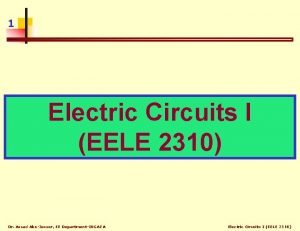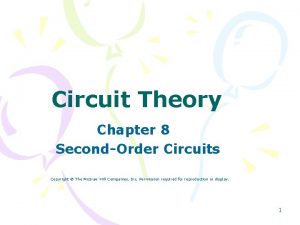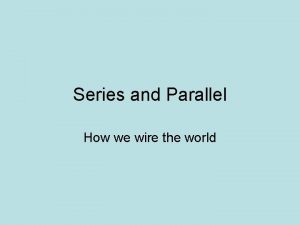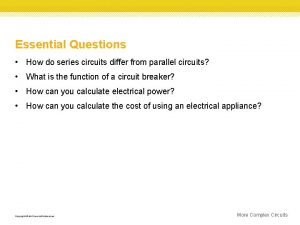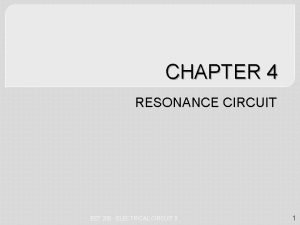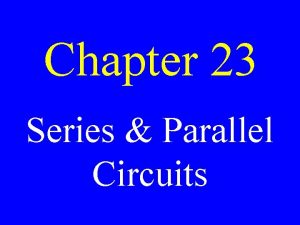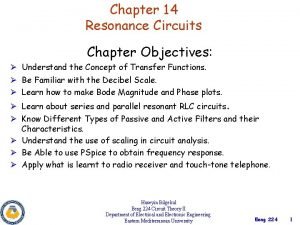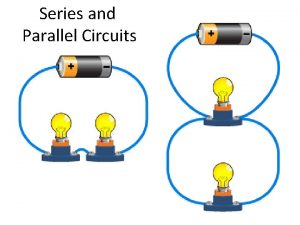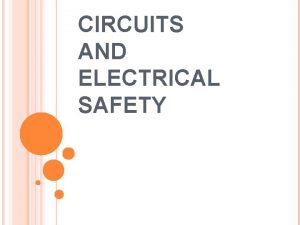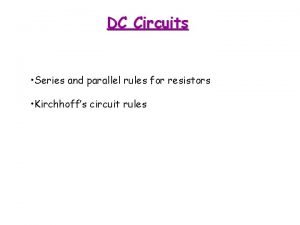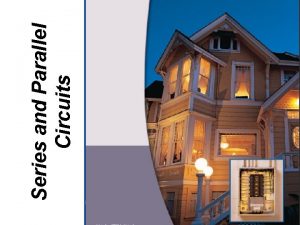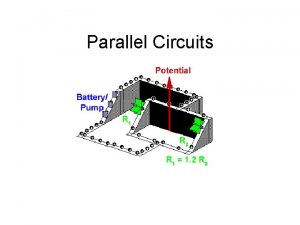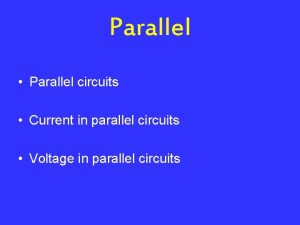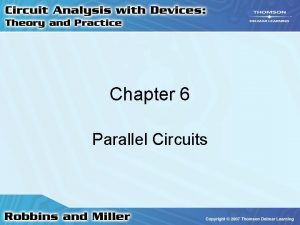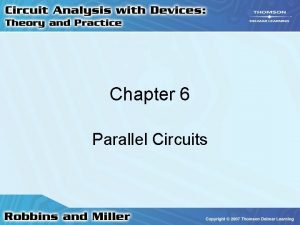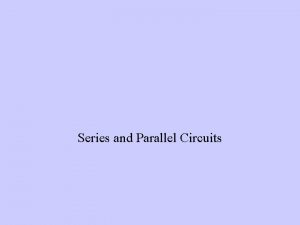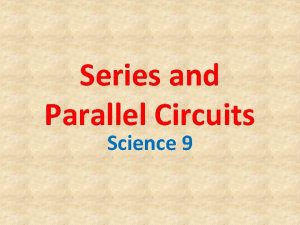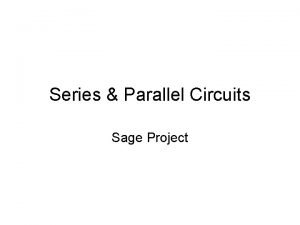Series and parallel circuits Lesson 1 series circuits















- Slides: 15

Series and parallel circuits Lesson 1 series circuits

Starter-which is a series circuit and which is a parallel circuit? Series circuit Parallel circuit

Objectives; • To be able to explain what a series circuit is • To learn the properties of series circuits • To understand what happens when resistors are added in series • To carry out calculations using series circuits

A series circuits connects all the components together in one loop. There is only one way round a series circuit

Animation 7. 1

Animation 7. 2

These fairy lights are all connected in series-what will happen if one bulb blows? They all go out! Why? The circuit is no longer complete

Series circuits – experiment 8 of 19 © Boardworks Ltd 2011

Summary The current is the same in all parts of a series circuit. 1 A A A 1 A 9 of 19 © Boardworks Ltd 2011

If the supply voltage stays the same; The greater the resistance in the circuit, the smaller the current in the circuit.

The supply voltage is shared between the components. The supply voltage is not always shared equally.

Potential difference across all the components in a series circuit must add up to the potential difference across the power supply. V V 6 V 4 V V 2 V Why are the voltages different across the two bulbs? A change in the resistance of one component will change the potential difference across all the components. 12 of 19 © Boardworks Ltd 2011

What is a variable resistor? What happens to the current in the circuit when the resistance of the variable resistor is increased? The current in the circuit decreases Why? What happens to the voltage across the component when the resistance of the variable resistor is increased? The voltage across the component decreases Why?

Resistances in series What is the total of the two resistances in series? In general for resistances in series: Total resistance, R = R 1 + R 2 + ……. 3Ω 5Ω

What about the voltages? 24 V Total resistance in circuit = 8Ω Current in the circuit = voltage / resistance = 3 A 3Ω Voltage across 3Ω resistor = current x resistance = 9 V What is the voltage across the 5Ω resistor? V Because the current is the same through both resistors, V = 3/8 x 24 5Ω
 Advantages of parallel circuit over series circuit
Advantages of parallel circuit over series circuit Lesson 8: comparing series and parallel rlc circuits
Lesson 8: comparing series and parallel rlc circuits V r and i in parallel circuits ch.8:1 answer key
V r and i in parallel circuits ch.8:1 answer key Pros and cons of series circuits
Pros and cons of series circuits Difference between series and parallel circuit
Difference between series and parallel circuit Series circuit questions
Series circuit questions Parallel circuit characteristics
Parallel circuit characteristics Chapter 23 series and parallel circuits study guide answers
Chapter 23 series and parallel circuits study guide answers Series and parallel circuits
Series and parallel circuits Facts about series circuits
Facts about series circuits Bill nye static electricity worksheet
Bill nye static electricity worksheet Venn diagram of heat and electricity
Venn diagram of heat and electricity Venn diagram series and parallel circuits
Venn diagram series and parallel circuits Series and parallel circuits rules
Series and parallel circuits rules Disadvantage of a parallel circuit
Disadvantage of a parallel circuit Lesson outline lesson 3 describing circuits answers
Lesson outline lesson 3 describing circuits answers

